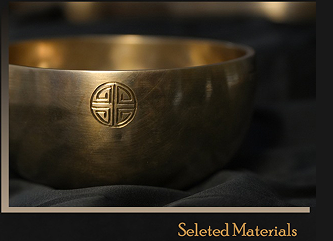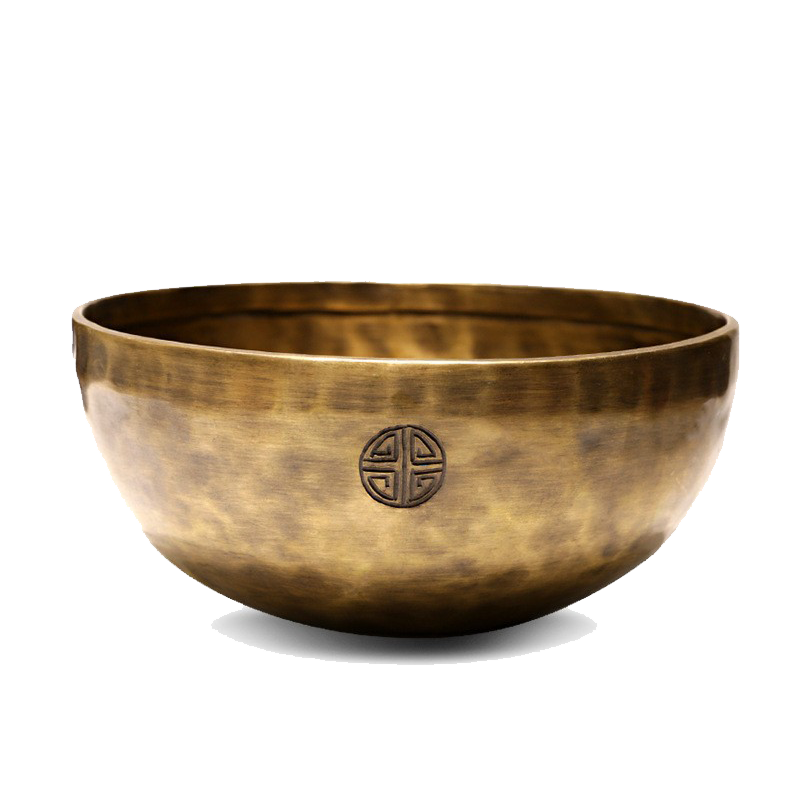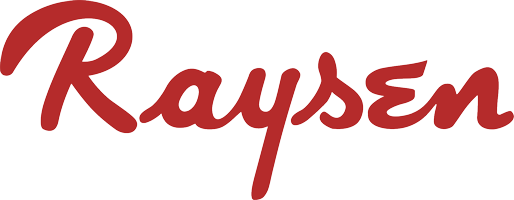Classification of Tibetan Bowls
A detailed categorization of Tibetan Bowls by material, purpose, origin, and acoustic characteristics:

I. Classification by Material
l Traditional Alloy Tibetan Bowls (Tibetan Tibetan Bowls)
Composition: Hand-forged from seven sacred metals (gold, silver, copper, iron, tin, lead, zinc), symbolizing the seven celestial bodies.
Characteristics: Deep, resonant tones with long-lasting overtones (1-3 minutes).
Visible hammer marks and oxidation patterns.
Primarily used in religious rituals and meditation therapy.
l Modern Copper Tibetan Bowls
Composition: Pure copper or brass (copper-zinc alloy).
Characteristics: Brighter tones, affordable.
Smooth surface, ideal for daily meditation and yoga.
l Crystal Tibetan Bowls
Composition: Made from high-purity quartz sand (tuned with metal oxides).
Characteristics: Ethereal, wind-chime-like tones with shorter sustain (~30 seconds).
Transparent or colored, often used in energy healing and decor.
II. Classification by Purpose
| Type | Use Case | Key Features |
| Meditation Bowls | Personal mindfulness practice | Medium-small size (12-18cm), tuned to healing frequencies (432Hz-528Hz). |
| Therapy Bowls | Professional sound healing | Low-frequency (100-300Hz) for body resonance; high-frequency (500Hz+) for emotional release. |
| Ceremonial Bowls | Temple rituals | Large (20-30cm), used with incense/mantras. |
| Decorative Bowls | Home décor/gifts | Engraved or gold/silver-plated, aesthetics prioritized over sound. |
III. Classification by Origin
Nepalese Tibetan Bowls
Handcrafted using ancient techniques, high copper/silver content, rich harmonics.
Subtypes: "Antique bowls" (century-old, collectible) and "new bowls" (modern production).
Tibetan Tibetan Bowls
Technically not manufactured in Tibet but used extensively in monasteries, becoming cultural symbols.
Indian Tibetan Bowls
Emphasis on Ayurvedic therapy, rugged designs.
Chinese-Made Tibetan Bowls

Machine-produced, cost-effective but with uniform tones (beginner-friendly).
IV. Classification by Playing Method
Struck Bowls: Hit with a mallet for short bursts of sound (attention-focusing).
Rimmed Bowls: Rubbed with a wooden wand for sustained tones (deep meditation).
Floating Bowls: Placed on cushioned pads to amplify resonance (professional therapy).
V. Special Types

Planetary Bowls:
Tuned to frequencies associated with celestial bodies (e.g., Sun Bowl: 126.22Hz).
Zodiac Bowls:
Feature Chinese zodiac carvings (cultural derivative products).
Purchasing Guide
Healing: Choose Nepalese antique alloy bowls (prioritize low frequencies).
Daily Meditation: Opt for modern copper or crystal bowls (portable).
Collecting: Seek certified antique bowls (require appraisal).
The vibrational frequencies of Tibetan Bowls directly influence brainwave states (α/θ waves). Always test for acoustic resonance before purchase.
Previous: What Is Steel Tongue Drum








